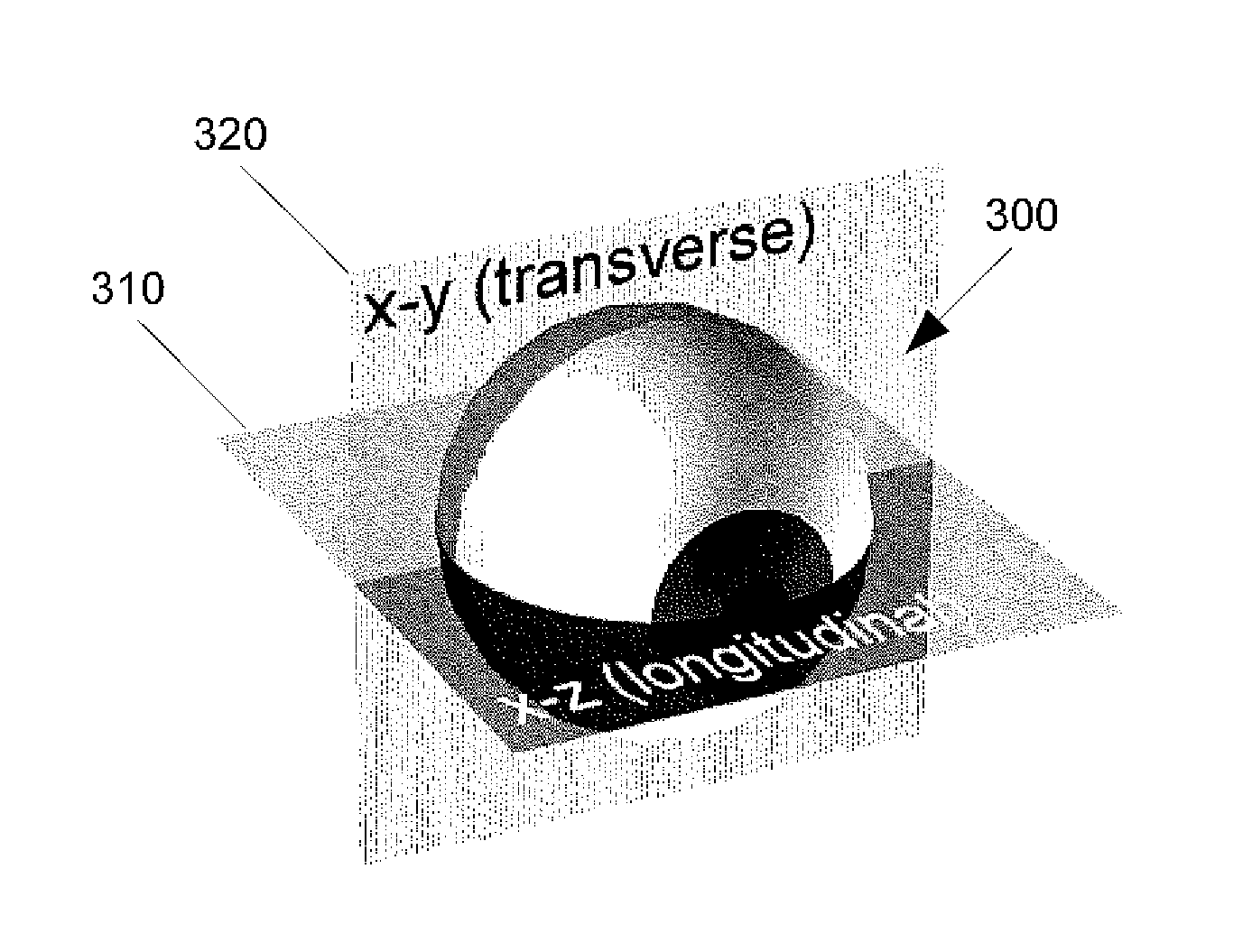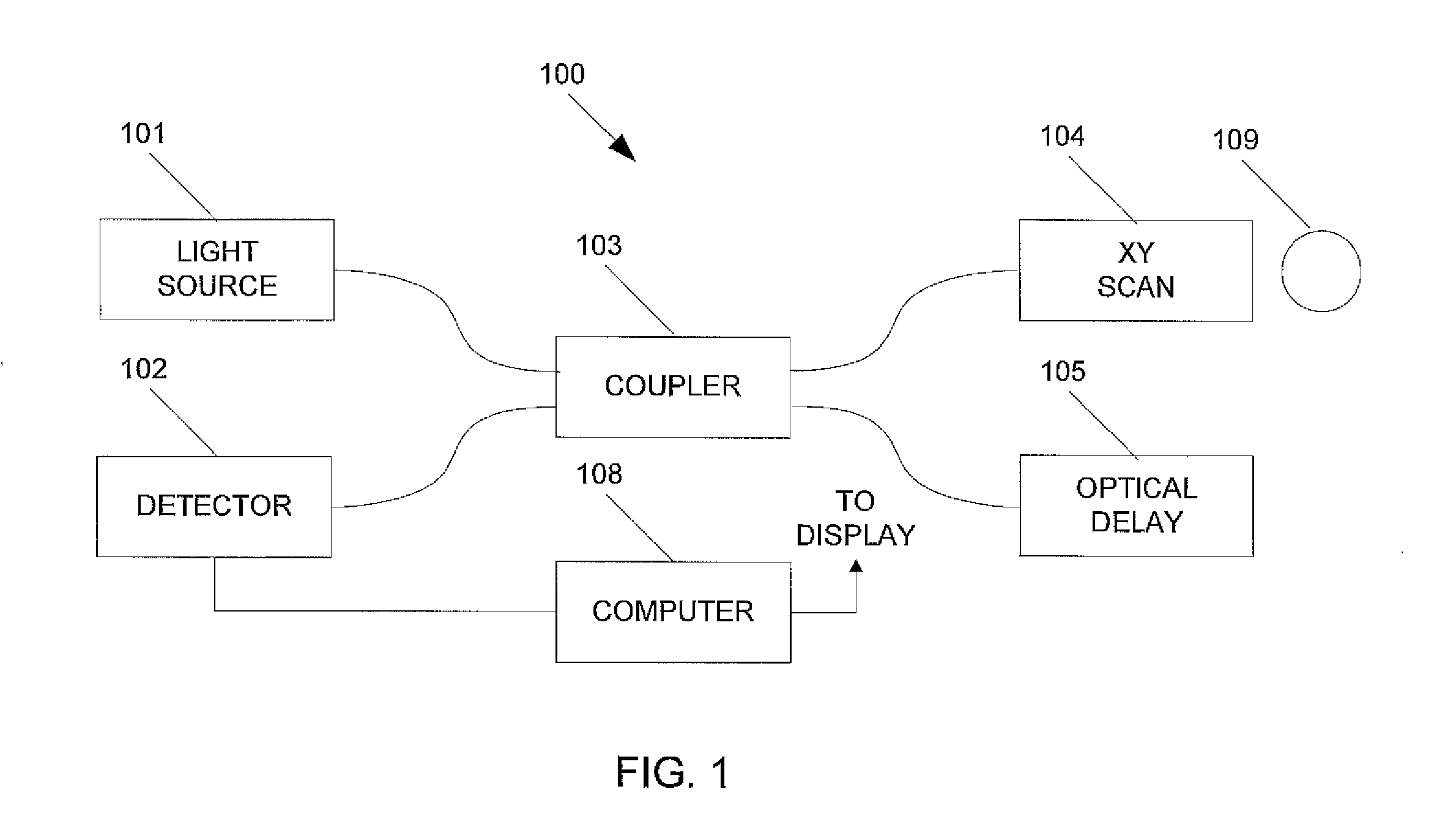Computer-aided diagnosis of retinal pathologies using frontal en-face views of optical coherence tomography
a technology of optical coherence tomography and computer-aided diagnosis, which is applied in the field of methods and systems for processing and representing images in ophthalmology, can solve the problems of involuntary creation of artifacts, limited number of cross-sectional images that can be obtained for evaluation and examination of the entire retina, and rendering the entire data set unreliabl
- Summary
- Abstract
- Description
- Claims
- Application Information
AI Technical Summary
Benefits of technology
Problems solved by technology
Method used
Image
Examples
Embodiment Construction
[0026]Optical Coherence Tomography (OCT) technology has been commonly used in the medical industry to obtain information-rich content in three-dimensional (3D) data sets. OCT can be used to provide imaging for catheter probes during surgery. In the dental- industry, OCT has been used to guide dental procedures. In the field of ophthalmology, OCT is capable of generating precise and high resolution 3D data sets that can be used to detect and monitor different eye diseases in the cornea and the retina. A new data presentation scheme and design, tailored to retrieve the most commonly used and expected information from these massive 3D data sets, can further expand the application of OCT technology for different clinical application and further enhance the quality and information-richness of 3D data set obtained by OCT technologies.
[0027]FIG. 1 illustrates an example of an OCT imager 100 that can be utilized in processing and presenting an OCT data set according to some embodiments of t...
PUM
 Login to View More
Login to View More Abstract
Description
Claims
Application Information
 Login to View More
Login to View More - R&D
- Intellectual Property
- Life Sciences
- Materials
- Tech Scout
- Unparalleled Data Quality
- Higher Quality Content
- 60% Fewer Hallucinations
Browse by: Latest US Patents, China's latest patents, Technical Efficacy Thesaurus, Application Domain, Technology Topic, Popular Technical Reports.
© 2025 PatSnap. All rights reserved.Legal|Privacy policy|Modern Slavery Act Transparency Statement|Sitemap|About US| Contact US: help@patsnap.com



